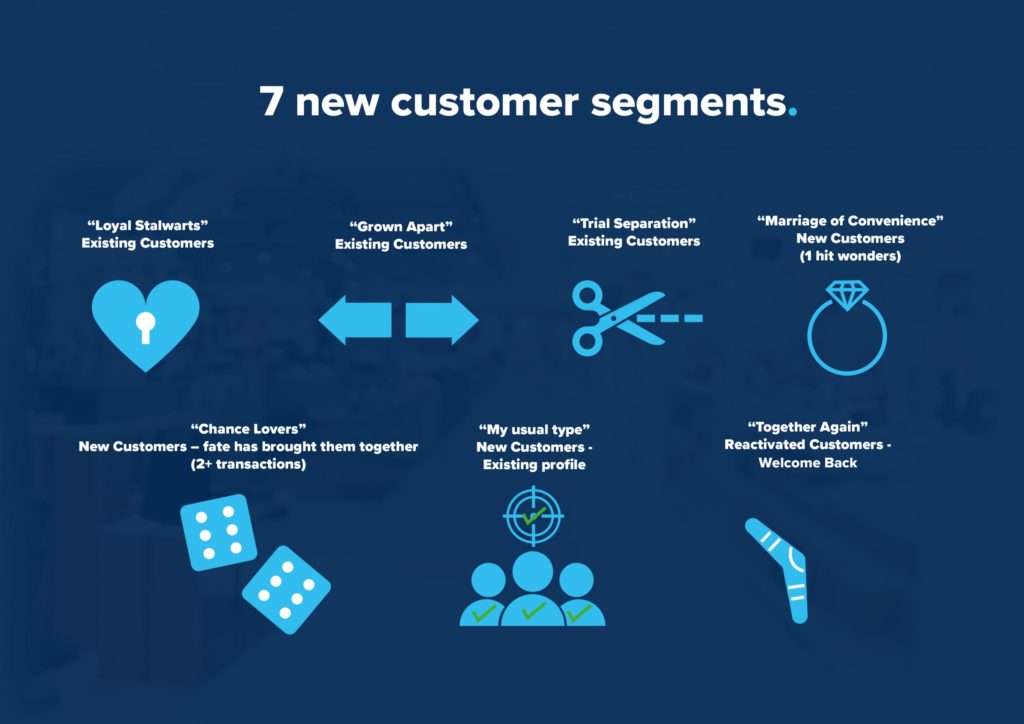By Beth Powell, Managing Director at Go Inspire Insight
What we spend, what we buy and how we shop has radically changed for the present, and will continue to evolve in the coming months. This ‘new normal’ is placing marketers under enormous pressure. They must rapidly understand how their customer base has changed, and put together robust strategies to ensure their business thrives in post-pandemic conditions.
The key is to make smart use of customer data and to draw on data insights to shape a response. With even longstanding customers leaving brands or behaving differently, pre-pandemic approaches may no longer be effective.
What does post-pandemic customer analysis look like in practice?
At Go Inspire Insight, we started assessing customer purchasing early on during the lockdown, in partnership with multichannel businesses that temporarily closed their physical stores. Looking at a pool of five million customers, we tracked unique spenders to determine the balance between new and existing customers, as well as the proportion of customers who had stopped shopping. We also assessed trends across a range of different factors such as age, channel usage and purchasing categories.
The study found that the percentage of ‘new’ customers doubled over March and April; this change of balance signifies a huge drop in existing customers continuing to shop.
This is a real warning sign, as it is not guaranteed that new recruits will deliver the same value as diminishing established customers. Businesses must therefore create offers and communications that entice lapsed customers back, but also to keep and grow profitable newcomers.
We found that looking at different categories of customer data also produced highly useful insights, which challenged assumptions and could be used immediately to inform and adjust marketing strategy. One example of this is that age was not a determining factor as to whether customers switched from store to online.
How are customers spending after the lockdown?
By analysing customer purchasing, we were able to distinguish seven broad clusters, characterising seven new behavioural profiles. Existing customers fell into three categories: Loyal Stalwarts (customers still spending), Grown Apart (customers spending less)and Trial Separation (customers who stopped spending completely). Trial separators – high-value store customers who didn’t make the switch to online – need special attention.
Businesses must think about how to intelligently re-engage these customers in-store, or encourage them to migrate online. New types or levels of service may be needed to excite these established customers in the new normal.
Many shoppers came across brands during lockdown that they may otherwise have missed. These brands may be tempted to invest heavily in newcomers by offering discounts and incentives.
However, it is important to identify the one-hit wonders, falling into the Marriage of Conveniencesegment, who have low retention potential and may leave after benefitting from promotions. Instead, marketing efforts should focus on Chance Lovers, chance visitors who are nonetheless high spenders and therefore have the potential to become a loyal new customer group if properly nurtured.
Our study also identified new customers who fit into the expected pre-pandemic profile: My Usual Type. These familiar customers must be nurtured along the customer journey as before, but not without an exploration of new characteristics and opportunities.
Lastly, many retailers may have noticed the return of previous customers who sought out a trusted brand during lockdown: the Together Againcategory of reactivated customers. Companies should make a fuss of their return and reward them accordingly for incremental spend.
What should marketers be looking for in their own analysis?
The customer segments described above provide a valuable starting point for businesses as they navigate a novel customer journey. However, each business must carry out a bespoke analysis of its own customer base to be able to respond effectively.
As a matter of urgency, marketers need to develop a clear picture of where they should focus their efforts. To start with, existing customer segmentation will need to be reviewed for relevance. Businesses must review how spending patterns have changed during and after lockdown, to build new behavioural profiles.
It is critical to identify which profiles are high-value and high-loyalty, or have potential for long-term spending. Brands that don’t carry out this type of analysis won’t be able to maximise customer retention or identify emerging opportunities.
With shops reopening, the current situation will quickly evolve, so marketing strategies and nurture plans will need to be reviewed regularly to take into account the latest developments. A sound understanding of post-pandemic purchasing trends combined with business agility will be invaluable for long-term recovery.
Go Inspire Insight’s full report – The Post-Pandemic Profiling Study, Part 1: Early evidence and insight – is available to download here.











